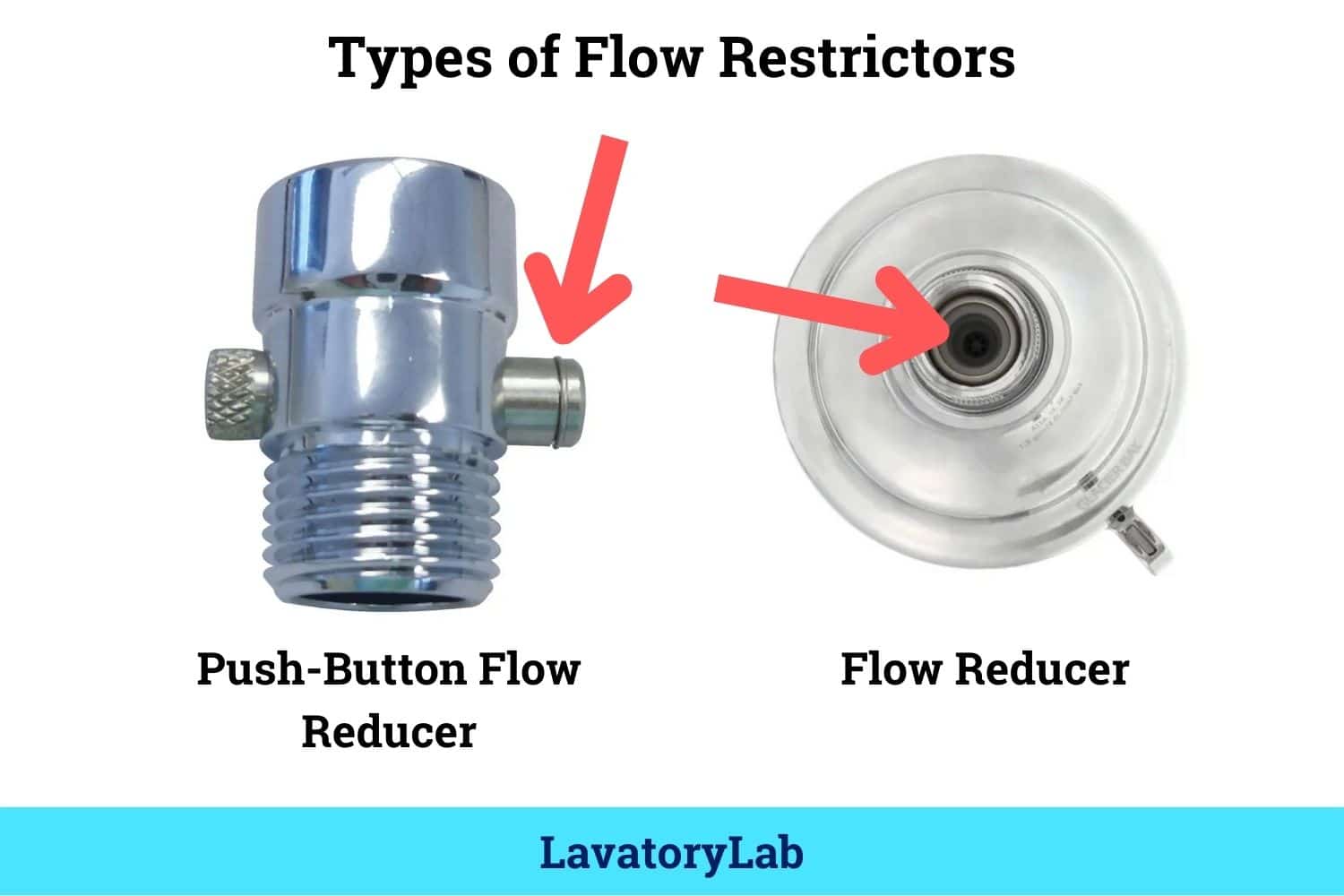With the passage of the Energy Policy and Conservation Act of 1992, all shower heads made after January 1, 1994, must have a flow rate of no more than 2.5 gallons per minute (source – pg. 13).
To comply with this federal law, many manufacturers install flow restrictors in shower heads. A flow restrictor is a small disk with a hole in the center that limits the amount of water flowing through the shower head.
Additionally, some showers may have an additional flow restrictor that rests between the shower head and arm. Commercial buildings, apartment buildings, and more may install a flow restrictor to reduce water flow and help save on utility costs.
Do All Shower Heads Have Flow Restrictor Valves?
Yes, to comply with the Energy Policy and Conservation Act, all shower heads manufactured after January 1, 1994, must have a flow restrictor.
If there isn’t a valve in place, the metal piping may be manufactured with smaller inner diameters to reduce water flow to be compliant.
How to Remove a Flow Restrictor Valve
Whether you have a Moen, Delta, Speakman, or any other type of showerhead, the process for removal is similar.
Here are the steps:
- Remove the shower head from the arm using a wrench if it’s tight.
- Locate the small disk with a hole in the center of the shower head. This is the flow restrictor.
- Use a screwdriver, pliers, or your fingers to remove the flow restrictor from the shower head.
- If there’s an additional flow restrictor between the arm and shower head, remove it as well.
- Wrap the threading on the shower arm with Teflon tape before reattaching the shower head.
- Hand-tighten the shower head back onto the arm.
- Give the shower head a 1/4 to 1/2 turn to tighten (be careful not to overtighten).
- Turn on the shower and check for leaks.
Video Demonstration on Removing a Restrictor Valve
Here are a few helpful videos we found on YouTube that show how to remove a flow restrictor valve:
Is Removing a Flow Restrictor Valve Illegal?
This is one of the most common follow-up questions we get from clients. While I should preface and say that I am not a lawyer, removing a flow restrictor valve shouldn’t cause any problems.
The Energy Policy and Conservation Act was put in place to regulate the flow rate of shower heads, not to enforce the use of flow restrictor valves. So, technically speaking, you should be in the clear.
However, don’t be surprised if you see a noticeable uptick in your monthly water bill due to removing the flow restrictor. Sometimes, it can double or triple your bill, depending on how many family members will use the shower.
Types of Flow Restrictors

Two types of flow restrictors are often used in shower heads:
- A physical disk with a small hole in the center fits snugly inside the shower head.
- A push-button valve is located between the shower head and the shower arm.
Adding a Flow Restrictor to an Old Shower Head
If you have an older shower head that doesn’t have a flow restrictor, you can easily add one. You can purchase them at your local hardware store or online. They are often available in varying flow rates ranging from 1.5 to 3.0 GPM.
To add a flow restrictor to an old shower head:
- Remove the shower head from the arm.
- Insert the flow restrictor into the shower head.
- Reattach the shower head to the shower arm.
Regulations
Aside from the Energy Policy and Conservation Act of 1992 that limited the maximum flow rate of shower heads, in 2006, the Environmental Protection Agency started the WaterSense program.
The WaterSense program takes the initial guidelines set by the Energy Policy and Conservation Act of 1992 and now recommends that companies limit the flow of water to 2.0 gallons per minute or less to place the WaterSense label on their packaging (source).
In 2020, President Trump brought the issue of water flow restrictors back to the forefront when he was looking to revise rules that would no longer cap the limit at 2.5 gallons per minute for multiple showerheads within a single shower stall (source). However, this was later reversed by President Biden in 2021 when he reversed the Trump-era rule (source)
Individual Cities & States
Beyond federal law, regulations can vary from city to city and state to state. For example, New York City requires that shower heads have a maximum flow rate of 2.0 gallons per minute. Whereas if you look at their California Green Building Standards Code 2019 section 4.303.1.3, you’ll see that the flow rate is capped at 1.8 gallons per minute for shower heads (source).
If you want to find out the limit for your local area, it’s best to contact your municipality’s water department or look up your state & city’s building code.
Conclusion
We hope this article helped you understand what a flow restrictor is, how to remove one, how it works, and the regulations surrounding its use. If you have any questions or want to share your experience with flow restrictors, please contact us.
